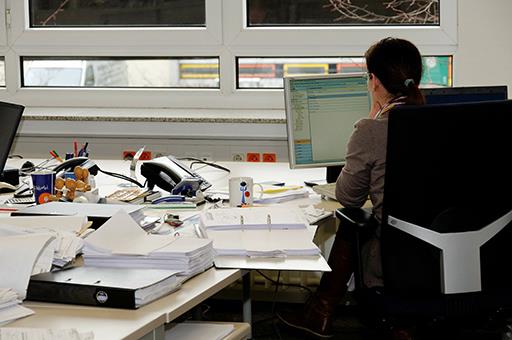Labour Force Survey
Employment rose by over 400,000 in 2019 and the number of people in work approaches 20 million
News - 2020.1.28
Employment rose by 402,300 in the last 12 months, which represents a year-on-year increase of 2.06%. Employment growth accelerated in the fourth quarter, with 92,600 more people in work. This is the highest quarter-on-quarter growth in this period since 2006.
Growth by the Spanish economy as a whole led to the creation of 968,500 jobs between 2018 and 2019, more than the figure forecast in the Stability Programme issued by the Government of Spain to Brussels last April.
The number of working women continued to rise to reaching 9.16 million, the highest figure on record. Year-on-year growth by this figure stands at 2.77%, higher than the equivalent figure for overall employment.
Job creation in the last 12 months was mainly concentrated in the private sector, with 360,000 more jobs and year-on-year growth of 2.2%. In turn, 42,300 jobs were created in the public sector at a growth rate of 1.32%.
Jobs have been created in all sectors, except agriculture. A total of 374,600 more jobs were recorded in the services sector than in the same quarter of the previous year, 55,400 more in the industrial sector and 4,000 more in the construction sector.
Employment in the last 12 months rose in almost every autonomous region of Spain. It is particularly worth noting this growth in the Region of Madrid with 138,900 more jobs, followed by Catalonia with 87,000 more and Andalusia with 45,800 more.
Permanent employment is growing much faster than overall employment
The number of people on permanent employment contracts continued to rise in the fourth quarter to 12,448,300, the highest figure on record. It should be noted that permanent employment rose by 414,200 in the last year, while temporary employment fell by 21,600. As a result, permanent employment rose at a rate of 3.44% year-on-year. This is higher than the equivalent rate for overall employment.
Full-time employment rose by 352,300 in the last 12 months, accounting for 87.57% of the total employment increase, while part-time employment rose by 50,100.
Unemployment rate falls by 13.8%, with a significant increase in the labour force
Unemployment fell by 112,400 in the last 12 months to stand at 3,191,900 (down 3.4%). Following this decrease, the unemployment rate now stands at 13.8%. This is the lowest in 11 years.
It should be noted that this fall in unemployment has been recorded against the backdrop of an ongoing increase in the working population, which grew by 290,000 in the last year to stand at 23.16 million people with a year-on-year growth rate of 1.27%, the highest since early 2009.
Quarterly assessment
The number of people in work rose by 92,600 in the fourth quarter of 2019, which is the highest figure for this period since 2006 and represents an increase of 0.47%. In seasonally-adjusted terms, this is an increase of 0.8% on the previous quarter. This employment increase was concentrated on women and on the age groups of over 40 and young people between 25 and 29. Employment in the services sector rose by 83,000, in agriculture by 47,600 and in construction by 14,000. Meanwhile, employment in the industrial sector fell by 52,100.
The number of unemployed fell by 22,500 in the last quarter of 2019. This is a decrease of 0.7% on the previous quarter and a decrease of 2.76% in seasonally-adjusted terms. The large increase in the labour force should be noted, which grew by 70,100 in the quarter. In this same period, it is also worth noting the fall in unemployment among the under-25s (down 62,400) and in first-time job-seekers (down 58,000).
Non official translation





